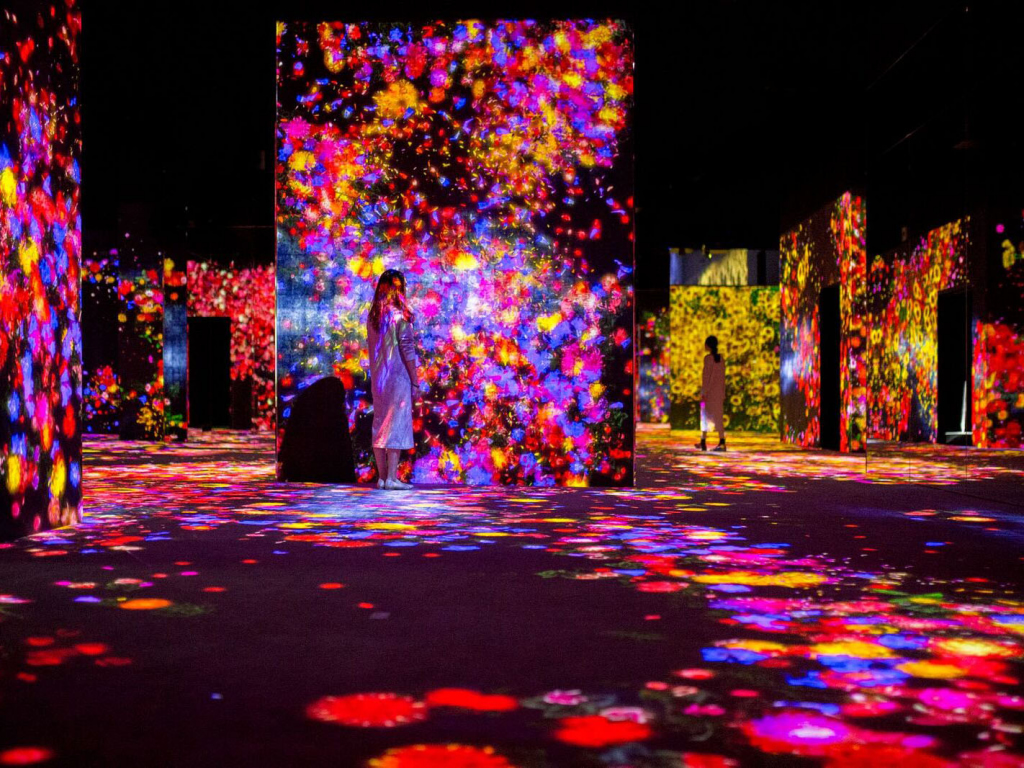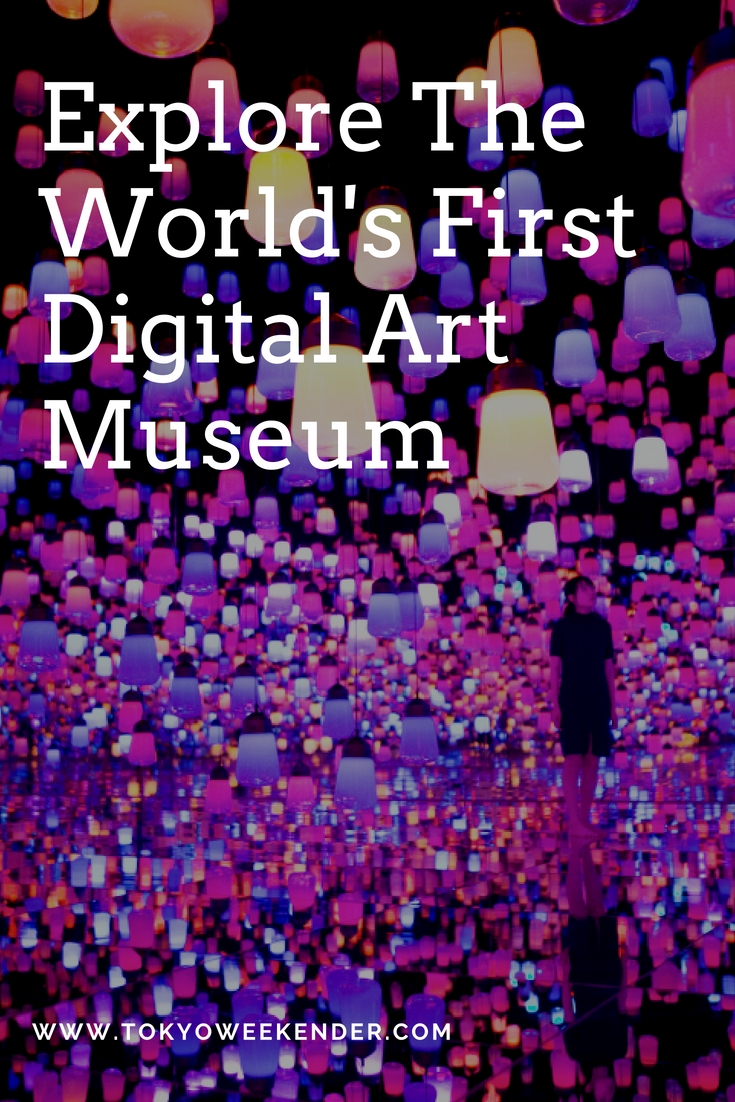As a pioneer of revolutionary technology, it’s only fitting that Tokyo hosts the world’s first digital art museum. Mori Building in collaboration with digital art collective teamLab have architected an immersive dreamscape, opening its doors to the public on June 21.
The remarkable – and sometimes disorienting – lighted phenomenon baits documentation and, for once, this writer doesn’t see a problem with oversharing. Because this museum is all about creating your own personal gallery through connecting and interacting and, as the name suggests, becoming borderless – both with the artworks and with those around you. This isn’t like viewing a work at the Louvre where a photo might cheapen the original. This isn’t like any museum you’ve ever stepped foot in before. Because most of the art here doesn’t actually exist as tangible work; the show encourages digital dispersion, fractured and flexible temporalities. And using your phone is arguably all part of the experience.
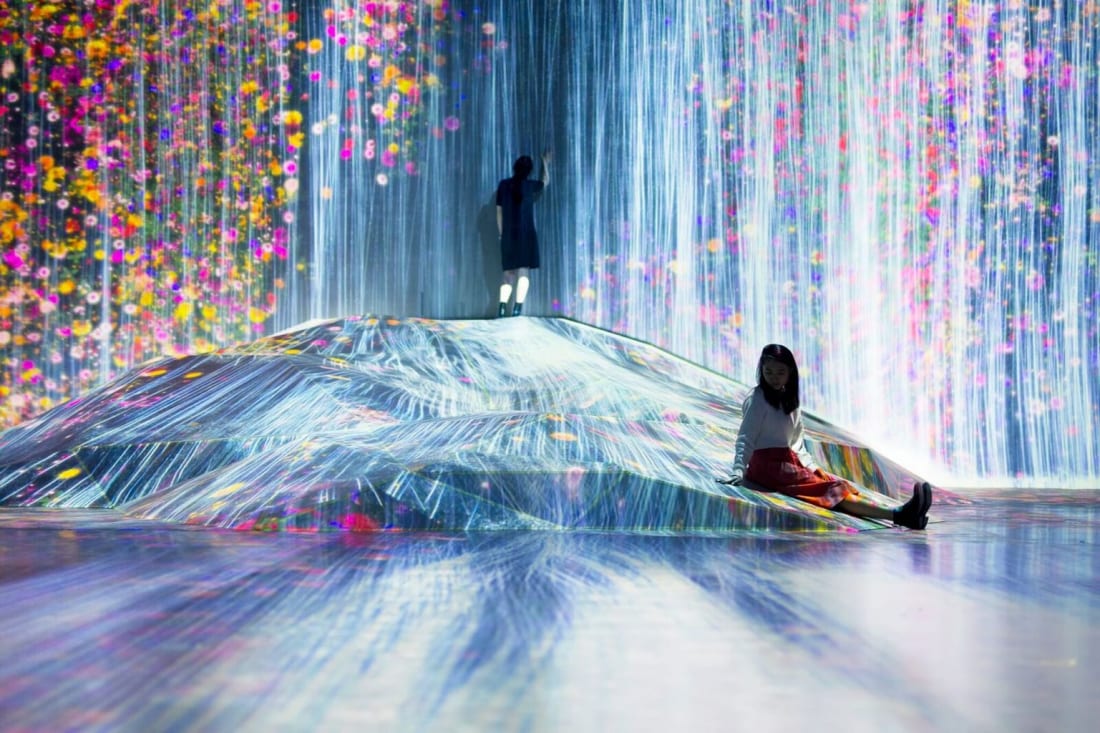
Walking into this 10,000 square-meter space is like entering the mind of a child or someone who has just ingested PCP. Assuming the artists intended to simulate the former, each of the 50 interactive artworks evokes a sense of innocence and sincerity. Computer-generated butterflies lead you into what is essentially a giant playground equipped with a space-themed trampoline and glowing neon jungle gym. All of the projections react to your touch; the geckos wriggle, the flowers blossom. Your preconceived notion of what makes up a traditional museum fades away as you accept that much of what you are looking at is based on the movement and projection of light. You have to fully indulge the fantasy or else you’re simply touching a blank wall in an empty room.
This lenient approach to reality requires the perspective of a child. (And some of the exhibits are expressly for children.) But for the fully-grown viewer, technology is used to elicit digital nostalgia. The artists conjure a synthetic youthfulness, opening your mind to their unconventional exhibition. The museum acts as a wormhole, liberated from the limits of linear time.
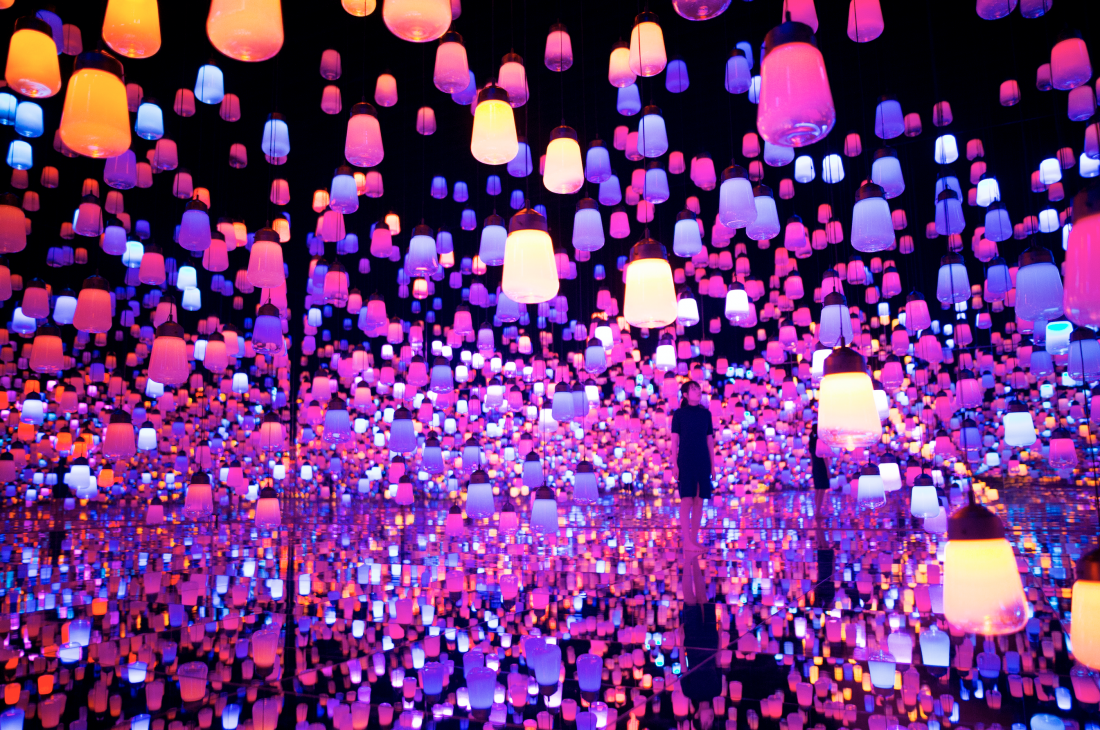
Each wonder is more spectacular than the last – perhaps most notably the “Forest of Resonating Lamps.” This room sports 1,000 suspended, motion-censored lanterns emitting low dreamy hues onto floor-to-ceiling mirrors. The light and reflections expand the space into eternity, reminiscent of Yayoi Kusama’s “Infinity Mirror Rooms.” Whether you think the forest represents a timeless plane or is just kitsch Instagram fodder, you can’t help but feeling some childlike awe.
“We explore the relationships that transcend the boundaries between people, and between people and the world”
As you make your way through the rooms, from the “Weightless Forest of Resonating Life,” to “The Way of the Sea,” and “Floating Space,” you’ll notice the persistent nature motif. The fields of celluloid lily pads and analog waves lapping up the walls intend to bridge the gap between nature and technology. It seems somewhat antithetical to the mission of a digital museum to masquerade as organic. Its artifice and simulation are its appeal. The exhibit is spectacular enough without camouflaging as a botanical garden.
Yet the ambitious museum aims to settle all contradictions – past and future, reality and fantasy, nature and technology – in order to create an objective space of coexistence. Toshiyuki Inoko, founder of teamLab, elaborates, “We explore the relationships that transcend the boundaries between people, and between people and the world.”
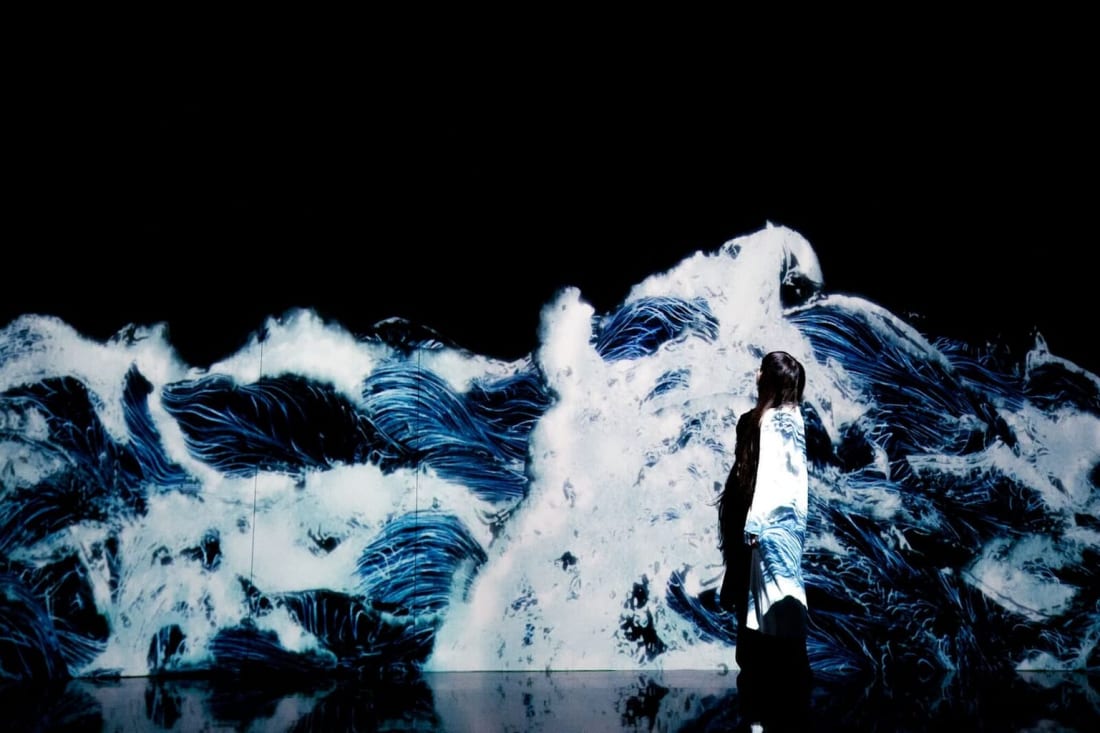
“Flowers Bloom in an Infinite Universe inside a Teacup” is the epitome of the show’s whimsy and nostalgia. The interactive tea party welcomes you into a Japanese-style Alice in Wonderland. You’re served real tea in a cup, but within seconds it’s blooming digital flowers and spouting petals onto the table. It is enjoyable like a card trick; you know it’s not real but you can’t quite explain how. And even though you’re aware that with one flick of the lights, you’d be left gaping into an ordinary teacup, you entertain the illusion. Similarly, you know the infinity room is quite literally smoke and mirrors, yet your childlike naiveté allows this world to briefly become real.
And perhaps that’s the artists’ intention; to throw their audience down a rabbit hole to exploit our inflexible realities. It seems inaccurate calling this project a museum at all because it’s not a place for embalming the past. It recognizes the ephemerality of the present – as elusive as a CG butterfly – and urges us to expand our horizons as we did when we were kids.
For tickets, opening hours and contact info, see our Concierge listing.
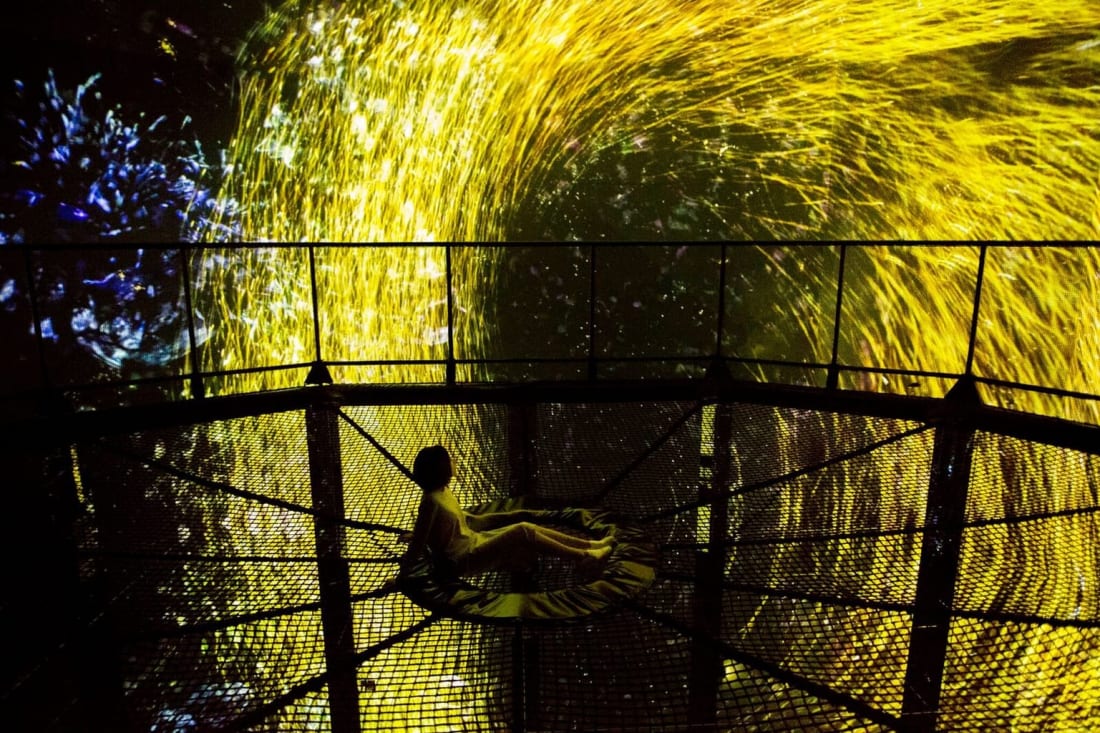
Updated On September 9, 2019

